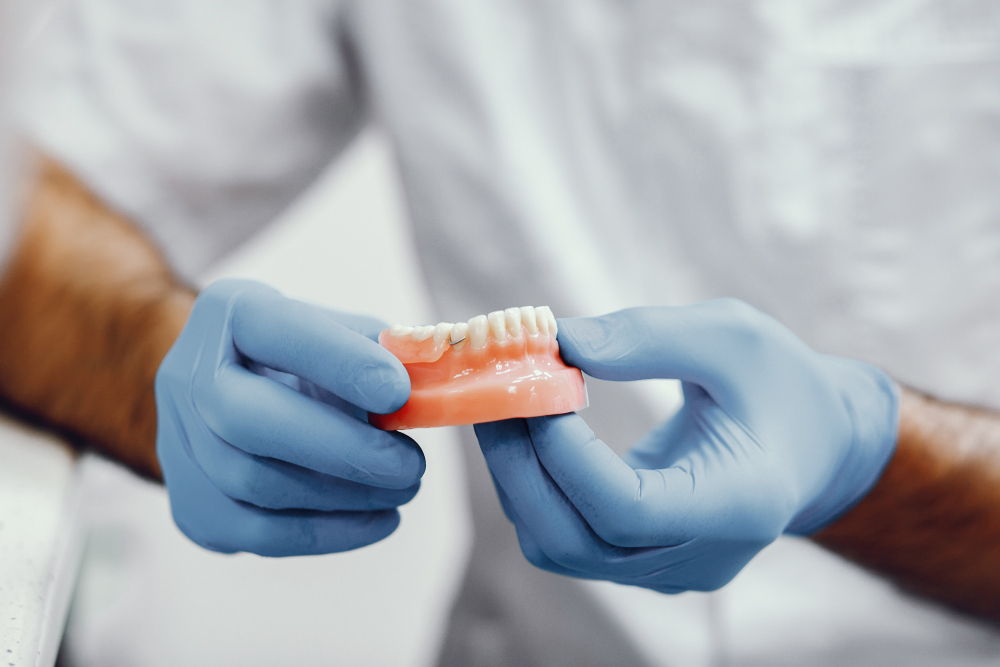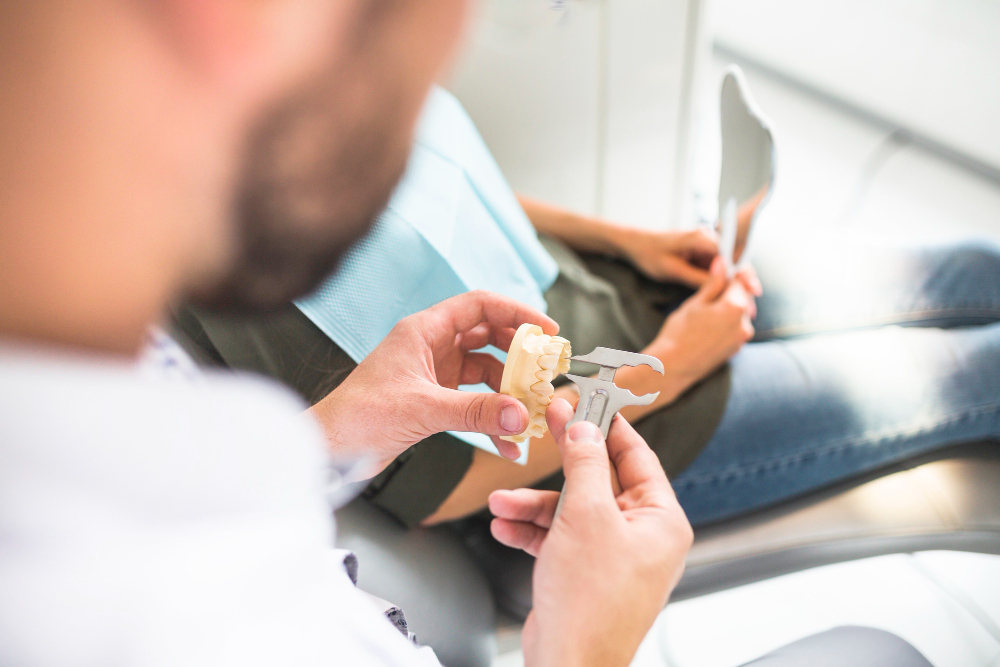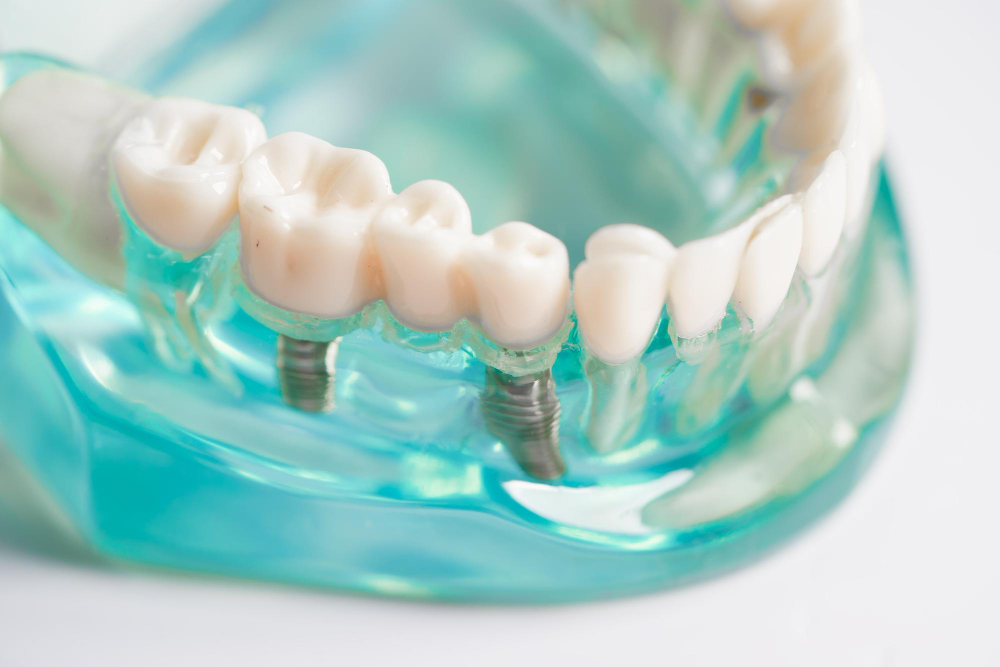What is all on 4 dental implants? This innovative technique has revolutionized full-arch rehabilitation, allowing patients to regain function and aesthetics with fewer implants and faster treatment. For dental professionals, mastering the All-on-4 protocol in 2025 means understanding not only the surgical procedure, but also patient selection, prosthetic options, and long-term maintenance. In this complete guide, we’ll break down the technical details, advantages, limitations, and clinical considerations so you can enhance your skills and provide world-class implantology solutions.
What are all on 4 dental implants?
All on 4 dental implants are a modern implantology technique designed to restore a full arch of teeth using only four strategically placed implants. Unlike conventional approaches, which often require six to eight implants per arch and sometimes bone grafting, the All-on-4 method maximizes existing bone by angling two posterior implants while placing two anterior implants straight.
This innovation was first introduced by Dr. Paulo Malo in the 1990s and has since been widely adopted as a predictable, minimally invasive solution for edentulous or nearly edentulous patients. The technique offers immediate function, meaning a provisional prosthesis can often be placed on the same day as surgery, significantly reducing treatment time and improving patient satisfaction.
For dental professionals, understanding what all on 4 dental implants are is essential to offering advanced rehabilitation options that balance efficiency, stability, and long-term success in implant dentistry.
Anatomy of the all on 4 technique
The All on 4 protocol is based on a precise biomechanical distribution of four implants to support a full-arch prosthesis. Two straight implants are positioned vertically in the anterior region, where bone density is usually greater. These implants provide stability and serve as the central anchorage of the prosthesis.
The two posterior implants, placed at an angle of 30–45 degrees, are the key to the technique. By tilting them, clinicians can engage more bone length, bypass the maxillary sinuses or mandibular nerve, and eliminate the need for bone grafting in most cases. This angulation also allows for a longer prosthetic arch, improving both function and esthetics.
Load distribution is another crucial aspect. The tilted implants increase the anteroposterior spread, reducing cantilever length and minimizing mechanical stress on the prosthesis. Combined, these design principles create a stable, cost-effective, and immediate solution for patients who otherwise might not qualify for traditional full-arch implants.
Indications and patient selection
Not every patient is a candidate for all on 4 dental implants, which makes careful case selection essential. The technique is best suited for individuals who are completely edentulous or have severely compromised dentition that cannot be preserved. Patients with failing full-arch prostheses or advanced periodontal disease also benefit greatly from this approach.
Bone availability is a critical factor. Since the posterior implants are angled, the all-on-4 method often avoids the need for grafting, but sufficient bone volume in the anterior maxilla or mandible is still required for stability. A cone beam computed tomography (CBCT) scan is indispensable for assessing bone density and anatomical limitations before planning surgery.
However, there are contraindications. Patients with uncontrolled systemic conditions (such as diabetes), heavy smokers, or those with poor oral hygiene compliance may experience higher risk of complications. Careful evaluation of occlusion, parafunctional habits, and medical history ensures predictable outcomes and long-term success.
For dental professionals, mastering patient selection is the foundation of achieving high survival rates with the All-on-4 technique.
Step-by-step surgical protocol
Performing the All-on-4 procedure requires meticulous planning and execution. Below is a breakdown of the clinical workflow:
1. Pre-surgical planning
Treatment begins with comprehensive diagnostics, including CBCT imaging and digital impressions. Virtual planning software helps determine implant positioning, angulation, and prosthetic design. Guided surgery kits may be used to increase accuracy and reduce chair time.
2. Anesthesia and flap design
Local anesthesia, often combined with conscious sedation, is administered to maximize patient comfort. A flapless approach may be possible in cases with sufficient keratinized tissue, while a minimal flap is preferred when visualization of the bone is necessary.
3. Implant placement
- Anterior implants are placed vertically in the premaxilla or interforaminal region, where bone quality is denser.
- Posterior implants are tilted 30–45 degrees to maximize bone contact, avoid anatomical structures (maxillary sinus, mental foramen), and extend the prosthetic arch.
Primary stability is critical, typically achieved with torque values above 35–45 Ncm.
4. Immediate loading
If sufficient stability is achieved, a provisional prosthesis is screwed onto the implants within the same appointment. This immediate function not only improves patient quality of life but also maintains soft tissue architecture.
5. Healing and integration
Osseointegration occurs over 3–6 months. During this time, patients are monitored for soft tissue health, occlusal adjustments, and proper hygiene. Once healing is complete, the final prosthesis, often fabricated from zirconia or hybrid materials, is delivered.
For clinicians, mastering each surgical stage ensures predictable, efficient, and long-lasting results with the All-on-4 protocol.
Prosthetic options with all-on-4
The prosthetic phase is as crucial as implant placement in determining long-term success. The all-on-4 technique supports a variety of prosthetic solutions that balance esthetics, function, and durability.
Provisional prosthesis
Immediately after surgery, patients typically receive a screw-retained acrylic provisional bridge. This provides function and esthetics during the healing phase while allowing soft tissues to adapt. Provisional prostheses are designed to minimize occlusal load and are easily adjusted if necessary.
Definitive prosthesis
Once osseointegration is confirmed, the definitive restoration is fabricated. Options include:
- Acrylic resin with titanium framework: Lightweight and economical, though less durable over time.
- Hybrid prostheses: Combination of metal framework and acrylic teeth, offering a balance of strength and esthetics.
- Monolithic zirconia bridges: Highly durable, biocompatible, and esthetically superior. These are increasingly considered the gold standard in 2025 due to their longevity and natural appearance.
Esthetic and functional considerations
Proper tooth positioning, vertical dimension, and occlusion design are critical to achieving natural speech, comfortable mastication, and long-term stability. Pink ceramics or composite materials may be used to mimic gingival contours, especially in cases of significant bone resorption.
For professionals, understanding prosthetic options ensures a customized treatment plan tailored to the patient’s functional needs and esthetic expectations.
Benefits compared to traditional implant solutions
The all-on-4 concept has become a preferred solution in full-arch rehabilitation due to its unique clinical and practical advantages. Compared to traditional implant approaches, it offers several key benefits:
1. Fewer implants required
Conventional full-arch rehabilitation may require six to eight implants. The All-on-4 technique achieves stability with just four implants, reducing surgical invasiveness and overall treatment complexity.
2. Avoidance of bone grafting
Because posterior implants are tilted to engage available bone, most patients do not require sinus lifts or bone grafts. This reduces morbidity, shortens treatment time, and broadens the pool of eligible candidates.
3. Reduced treatment time
Immediate loading allows patients to leave surgery with a fixed provisional prosthesis. Traditional protocols often require months of healing before prosthetic placement, which can affect patient confidence and function.

4. Cost-effectiveness
By minimizing the number of implants and eliminating additional grafting procedures, All-on-4 lowers overall treatment costs without compromising long-term outcomes.
5. Proven success rates
Decades of clinical research support high survival and success rates, making All-on-4 a predictable and evidence-based solution for full-arch rehabilitation.
For dental professionals, these advantages translate into a treatment protocol that is efficient, patient-friendly, and clinically reliable.
Limitations and disadvantages
While the all-on-4 approach offers many advantages, it is not a universal solution. Dental professionals must be aware of its limitations and potential complications to ensure realistic expectations and proper case selection.
1. Patient suitability
Not all patients qualify for the all-on-4 technique. Severe bone loss in the anterior maxilla or systemic conditions such as uncontrolled diabetes may compromise implant stability and osseointegration.
2. Prosthetic complications
Because the prosthesis is supported by only four implants, mechanical stress is concentrated. Common complications include screw loosening, acrylic fractures in provisional prostheses, or veneer chipping in definitive restorations.
3. Hygiene and maintenance
Fixed full-arch prostheses can pose challenges for oral hygiene. Inadequate maintenance may lead to peri-implantitis, prosthetic failure, or bone loss. Patient compliance with hygiene instructions is critical.
4. Risk of total failure
If one implant fails, the stability of the entire prosthesis may be compromised, unlike multi-implant cases where redundancy offers more security.
5. Esthetic limitations
In patients with significant bone resorption, prostheses may require artificial gingival components to achieve acceptable esthetics, which some patients may find less natural. By understanding these disadvantages, clinicians can better inform patients, manage risks, and plan alternative solutions when necessary.
Postoperative care and maintenance
Successful outcomes with the All-on-4 technique depend not only on surgical precision but also on strict postoperative care and long-term maintenance.
Immediate postoperative management
Patients are advised to follow a soft diet during the initial healing period to reduce functional stress on the provisional prosthesis. Pain management typically includes NSAIDs, and antibiotics may be prescribed to prevent infection. Swelling is managed with ice packs and anti-inflammatory medication.
Oral hygiene protocols
Meticulous hygiene is essential to prevent peri-implant disease. Patients should use:
- Soft-bristle toothbrushes for gentle plaque control.
- Water flossers or interdental brushes to clean under the prosthesis.
- Chlorhexidine rinses in the early stages of healing to reduce bacterial load.
Professional maintenance
Follow-up visits are recommended at one week, one month, and then every three to six months. At each appointment, clinicians should:
- Assess soft tissue health and implant stability.
- Adjust occlusion and tighten prosthetic screws if necessary.
- Perform professional cleanings with non-abrasive instruments.
Patient education
Continuous reinforcement of hygiene techniques and dietary advice ensures compliance. Educating patients about signs of complications, such as bleeding, mobility, or discomfort, enables early intervention.
By prioritizing maintenance, dental professionals can significantly increase the longevity of All-on-4 restorations and protect their investment in patient care.
Cost of all on 4 dental implants
One of the most common patient concerns is the cost of treatment. Dental professionals must be prepared to explain not only the price but also the value of the All-on-4 approach compared to alternative solutions.
How much should 4 implants cost?
The cost of All-on-4 treatment varies widely by region, clinic, and materials used. In the United States, prices typically range between $20,000 and $30,000 per arch, while in Europe or Latin America the fees may be significantly lower. These costs generally include implant surgery, provisional prosthesis, and the final definitive restoration.
Factors influencing cost
- Implant brand and prosthetic materials (zirconia restorations are more expensive than acrylic).
- Diagnostic tools such as CBCT scans and guided surgery systems.
- Clinician expertise and clinic reputation.
- Geographic location, which affects overall operating costs.
Value compared to alternatives
Although more expensive upfront than removable dentures, the All-on-4 technique provides superior stability, function, and long-term satisfaction. Compared to conventional full-arch implant protocols with grafting, it is usually more affordable and involves fewer procedures.
For dental professionals, presenting costs in terms of long-term benefits and patient quality of life helps position All-on-4 as a valuable investment rather than a simple expense.

Longevity and success rates
A critical question for both patients and clinicians is: How long do all-on-4 implants last? Clinical evidence shows that when properly planned and maintained, this technique delivers excellent long-term outcomes.
Clinical survival rates
Studies consistently report survival rates above 95% at 10 years for implants placed using the All-on-4 protocol. Success depends on factors such as implant stability, prosthetic design, and patient compliance with hygiene protocols.
Factors influencing longevity
- Bone quality and density: Stronger bone provides greater long-term stability.
- Occlusal design: Proper load distribution reduces mechanical stress on implants and prostheses.
- Patient habits: Smoking, bruxism, or poor oral hygiene significantly reduce implant survival.
- Maintenance: Regular professional cleanings and check-ups are critical for long-term success.
Prosthesis longevity
While implants may last decades, prosthetic components such as acrylic teeth or hybrid frameworks may require replacement or repair after 5–10 years due to wear, chipping, or fracture. Zirconia restorations, by contrast, offer greater durability and can last much longer with proper care.
In 2025, advances in digital planning, implant surfaces, and prosthetic materials are further improving long-term predictability, making All-on-4 one of the most reliable full-arch rehabilitation options available today.
All on 4 dental implants have transformed the way clinicians approach full-arch rehabilitation, combining efficiency, predictability, and patient satisfaction. By mastering this technique, dental professionals can offer immediate function, reduced treatment times, and long-lasting esthetic results.
As implantology continues to evolve in 2025, staying updated with advanced surgical protocols, digital planning, and prosthetic innovations is key to delivering world-class care.
For dentists who want to elevate their skills, at the International Institute of Implantology and Advanced Aesthetics we offer specialized training and resources to help you achieve excellence in modern implant dentistry.


